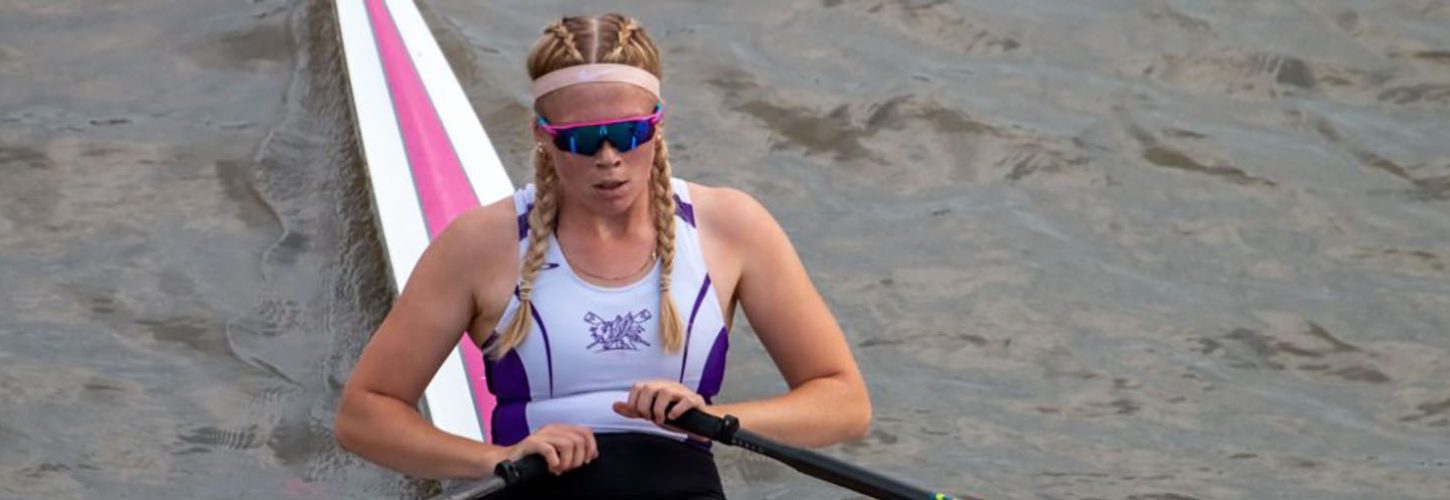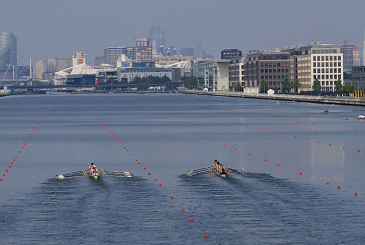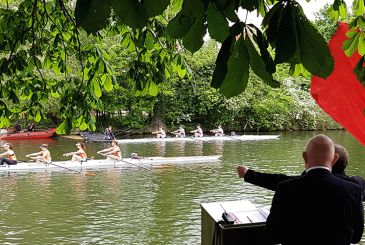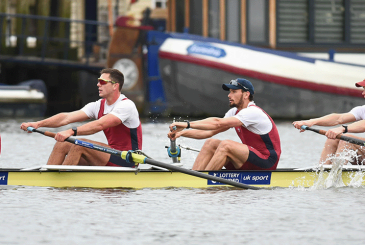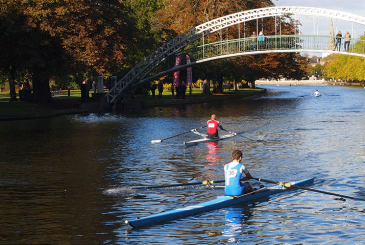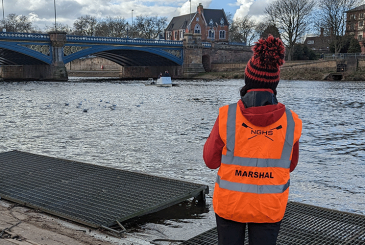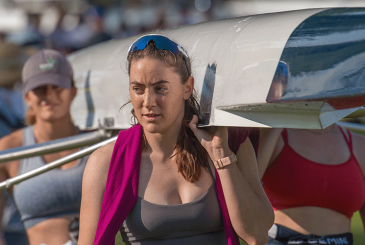Is it possible to do well at the Scullers’ Head if you don’t train on the Tideway regularly? Rachel Egan explains what she did to win the Junior Women’s category in 2021 when competing for Wycliffe College, and talks to two other successful competitors
Talk about a baptism of fire for the head race season! On Saturday, 17 September, the 64th Vesta Scullers’ Head, an event renowned for its test of skill and endurance, will take place at a time of year that will surely run chills along the spine of sculling enthusiasts only just back from their summer holidays.
500 eager athletes – ranging in age from junior to masters and of varying abilities from novice to international – will emerge from clubs scattered along the Tideway and further afield to race from Mortlake to Putney. The pull of this ultimate test in winter racing is undeniable, not least in the bragging rights afforded to the victors.
But there’s a common misconception that you can only do well on the infamously-tricky Championship course if you scull on that twist of water all year round. With the help of a few other victors from last year, here’s my advice to those who have entered the 2022 competition – wherever you train.
Meg Jackson achieved the quickest senior women’s time in 2021, winning the Women’s Masters category when racing for London RC. She shared her top three tips for going into combat with the race:
Tip 1: Learn the course! Identify markers that you can use to push off and to refresh your pace. These help the time to fly by too.
This is a critical element, giving structure to your race when at pace for anywhere between 20-30 minutes.
Tip 2: Double check all your equipment and remember there are no ‘magic beans’ to help you, just hard work and patience.
This is something I can relate to personally, having got it all wrong last year. Superstition prevailed as so many things went wrong on the morning of the competition (for example, my gate popping open on the row to the start, only to be noticed by a – guardian angel – sculler from Cardiff) that I prayed I was going to have a good race to ‘balance it out’.
Tip 3: Be brave; you’ll be questioning your life choices at times out there, it’s a tough old distance to race all by yourself.
If you’re crazy enough to enjoy regular singles outings then this may not be as relevant, however adding to Jackson’s point: don’t allow little slip-ups to frustrate you. Every stroke is a new stroke and an overall rhythm will get disrupted by anger. So be brave and be resilient.
GB lightweight and Oxford Brookes athlete Jamie Copus is a two-time overall winner of the event, in both 2014 and 2021, and explained how the race can be decided much earlier than you’d expect.
Tip 1: Make sure you boat in good time, especially if you are not at a host club near the start; it can get pretty busy on the way up.
Scullers boating from the Putney Embankment get the advantage of a warm-up to Chiswick Bridge, but it does take quite a long time to get there. Provided it isn’t too cold – which is far less likely now that the race has moved to September from its previous December slot in the calendar – it never hurts to get out on the water with plenty of time to ease into the day.
Tip 2: Don’t try and be a hero in the first five minutes.
Flying and dying is often more associated on the erg but it applies on water too, particularly when you’re on your own. That first 500m may feel very easy but it’s what you do in the lowlands between Barnes and Hammersmith bridges that will define your performance.
Tip 3: Given how the Tideway twists and turns, have a look at the weather beforehand so you know how to handle each section of the course.
Tensions ran high in the minibus on the morning of the race, he explains: “We crowded round a phone replaying Phelan Hill and Sophie Shapter’s guide to steering the Tideway” (a go-to video I highly recommend to anybody new to the course).
Personally, I can’t stress importance of the line you take enough: my success was largely down to my chosen route, a strategy which pays dividends in such a strong stream. Basic rules like keeping to the middle are complicated by every gust of wind or bridge. Ask other scullers to move over if you’re overtaking rather than try to overtake in dead water. Use the boats around you to judge your position on the course.
Final advice
I would also add that maintaining a healthy headspace is key to driving a metronomic rhythm in what’s likely the longest race you’ll ever have to face alone. With apologies to all my lightweight friends, a strong, lower rate is how I suggest handling the course, especially if you’re facing the scourge of many a Scullers’ Head prospect – a punchy headwind. I vividly remember one such headwind under Hammersmith Bridge; battling that added resistance in the last 2km stretched the race out and I recall seeing my rating drop to 23 or 24spm on my speed coach. Keeping a cool head in these conditions will benefit you in the long-term. Copus agreed, and suggested that scullers “go off feel rather than the absolute numbers; prioritise rhythm”.
The most important thing, though, is to enjoy yourself. The opportunity to race and potentially win the same title shared by legends like Mahe Drysdale and Sir Steve Redgrave is a massive opportunity and testament to your own capability, so scull forth without fear! Two final pieces of wisdom come from Jackson, who says: “Take a last-minute toilet stop before boating and bring a pair of wellies!
Photo: Junior Rowing News.


